Free Inductive Reasoning Test Practice: 2023 Prep Guide
Inductive Reasoning tests are tests that assess your ability to get to the right conclusion based on a series of events or examples. Unlike deductive reasoning tests, in which you get to a conclusion based on a given set of rules, on inductive reasoning tests you assume what are the rules or logic that govern the set of examples, and then you find the correct answer based on your assumptions.
Mục Lục
Did you know?
Inductive Reasoning Tests assess the ability to reach conclusions based on just a few examples. On aptitude tests, inductive reasoning sections usually utilize abstract shapes and have four basic types of questions: (1) series completion, (2) matrix completion, (3) finding the object that doesn’t belong, and (4) shape analogies. Test takers who can think both conceptually and analytically perform well on these types of tests.
Most of the inductive reasoning tests are non-verbal in nature – they use figural and symbolic elements rather than using numbers and words. Here are four of the most common types of non-verbal inductive reasoning questions.
Question Types Explained
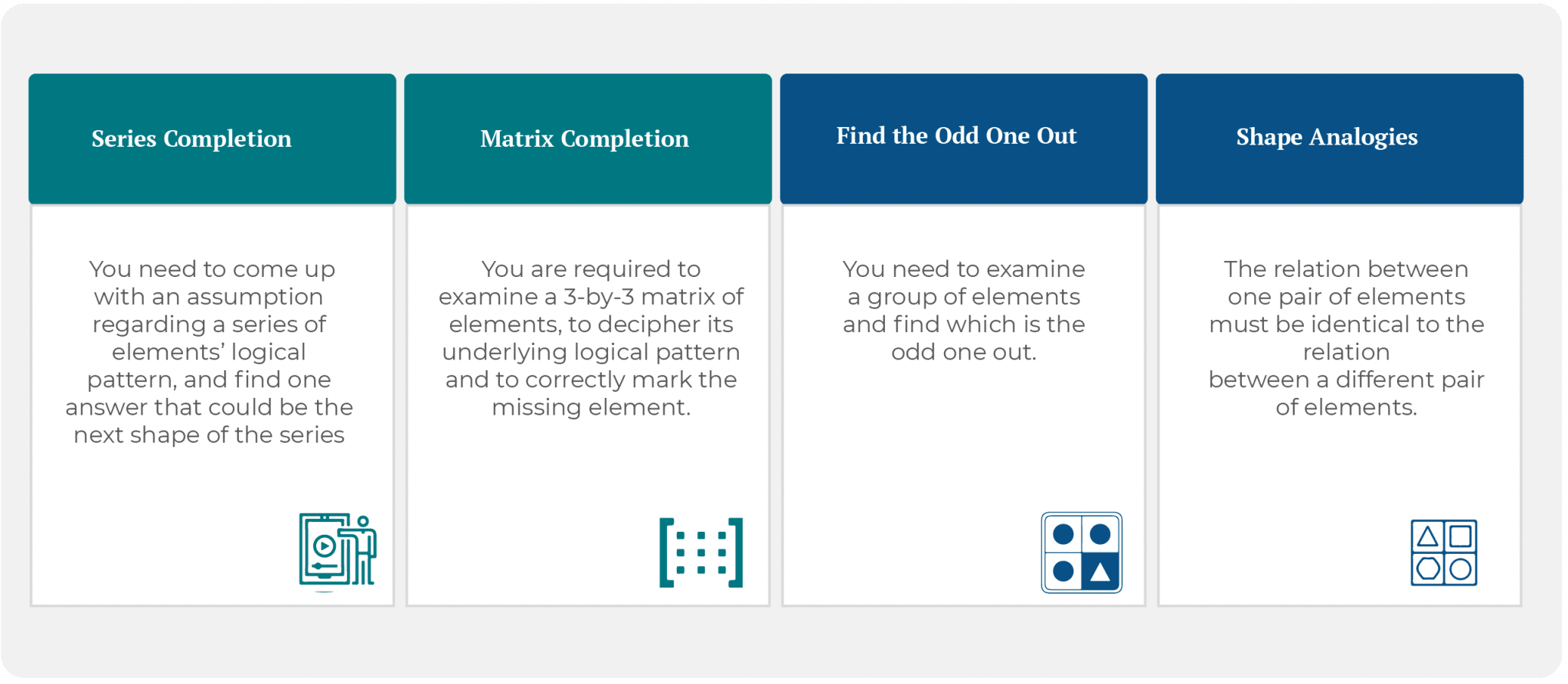
Inductive Reasoning Test Question Types. Source: iPREP
1. Inductive Reasoning Series Completion
This is probably the most common type of inductive reasoning questions. You are required to examine a series of elements, which follow a certain logical pattern. You need to come up with an assumption regarding the series’ logical pattern and find one answer that could be the next shape of the series, given that it maintains that logical pattern.
The series is usually comprised of 3-5 elements and there are usually 4-6 options to choose the correct answer from. A variation of this type of question is the completion of an element in the middle of a given series of shapes.
Try a Series Completion Sample Question
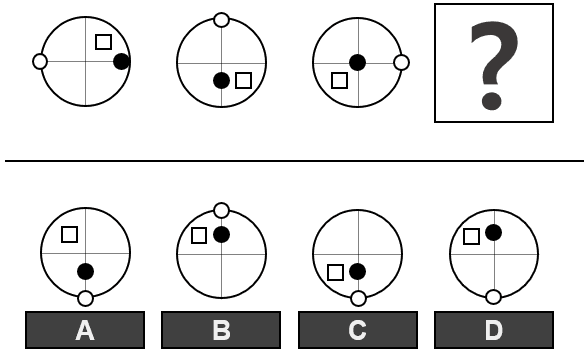
Answer: A
Explanation
Each element is comprised of a square divided by two lines and of three shapes—a black circle, a white circle, and a white square. The logic of the series is based on two processes:
- In each step, the element is rotated 90 degrees clockwise. The rotation cannot be recognized if one only looks at the big circle and the lines because of its symmetry; however, you can follow the white circle and the white square and realize that they maintain their relative positions. Assuming the trend continues, and the element is rotated 90 degrees again, then answers A and D represent the expected positions of the white circle and the white square.
- In addition to the rotation, the black circle moves along the line it is initially positioned on. In each step, the black circle gets closer to the white circle, which is the case in answers A, B, and C.
Altogether, only answer A displays an accurate combination of both of the processes.
2. Inductive Reasoning Matrix Completion
In this type of question, you are required to examine a 3-by-3 matrix of elements, to decipher its underlying logical pattern and to correctly mark the missing element. The logical pattern may be related to the matrix’s rows, columns, diagonals, or a combination of these.
Try a Matrix Completion Sample Question
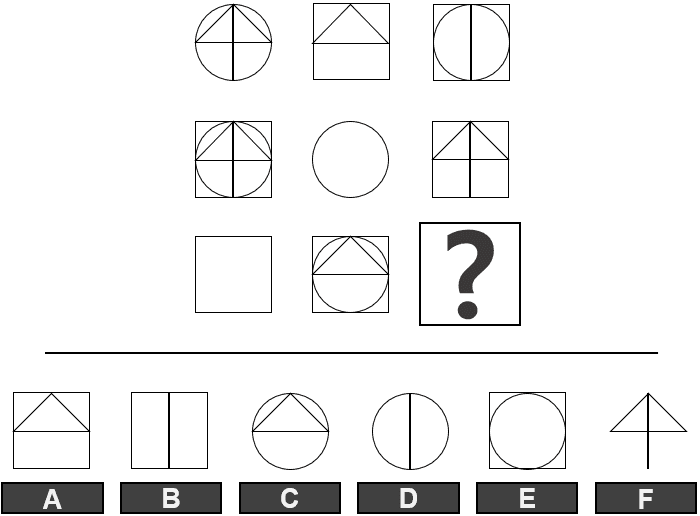
Answer: C
Explanation
Take any two elements of one column or of one row and compare them. If they share a feature, then the third element of that column/row does not include that same feature. On the contrary, if there is a feature that appears in only one of them, it is included in the third element as well.
For example, in the left column – the top and the middle elements are identical except for the square that surrounds the middle element. Therefore, none of the features comprise the bottom element but the surrounding square.
The missing element – the left two elements of the bottom row share one feature, a square. The features inside the square of the bottom middle element are unique to that element, and the bottom left element has no unique features. The missing element, thus, is identical to the unique features of the bottom middle element – a triangle within a circle.
3. Inductive Reasoning Finding the Odd One Out
In a different take on inductive thinking, in these questions, you need to examine a group of elements and to realize which distinct characteristic is common to all elements of the group but one. That element is the odd one out.
Try an Odd-One-Out Sample Question

Answer: E
Explanation
The base of each of the shapes within the elements is at the bottom except for shape E, whose base is at the top.
Note that in order for an element to be the odd one out, it needs to be truly unique. In this example, only element C contains a triangle. One may claim that this makes it the odd one out. However, elements B and D contain quadrangles, and elements A and E contain pentagons. This means that for the property “number of edges,” elements A, B, D, and E do not share the same characteristic. This means that element C is not the odd one out.
4. Inductive Reasoning Shape Analogies
In this type of question, inductive reasoning is working at its best. You need to come up with a logical explanation and find the correct answer based on a single example. As in verbal analogy questions, the relation or differences between one pair of elements must be identical to relation/differences between a different pair of elements.
Try a Shape Analogy Sample Question
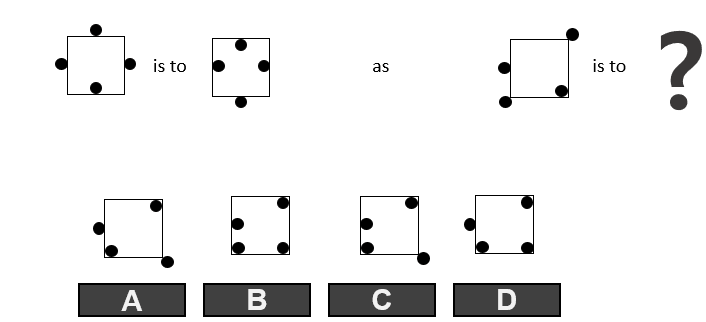
Answer: C
Explanation
In the pair at the left, every circle that was attached to the square from the outside moves to the adjacent position inside the square. Respectively, every circle that is attached to the square from the inside moves to the adjacent position outside the square.
In order to maintain the analogy, the same rule must apply to the pair at the right.
Answer C does just that – three circles that were outside of the visible element of the pair at the right move inside, and one circle that was inside the element moves outside.
iPREP: Concise. Focused. What you need.
Sign up
Immediate access
Practice
Online self-paced
Pass
Ace that Test!
Technical Facts
Inductive Reasoning Test Fast Facts (tl;dr)
- Non-verbal questions.
- Usually given by SHL.
- Question types: Series completion, matrix completion, odd one out, shape analogies.
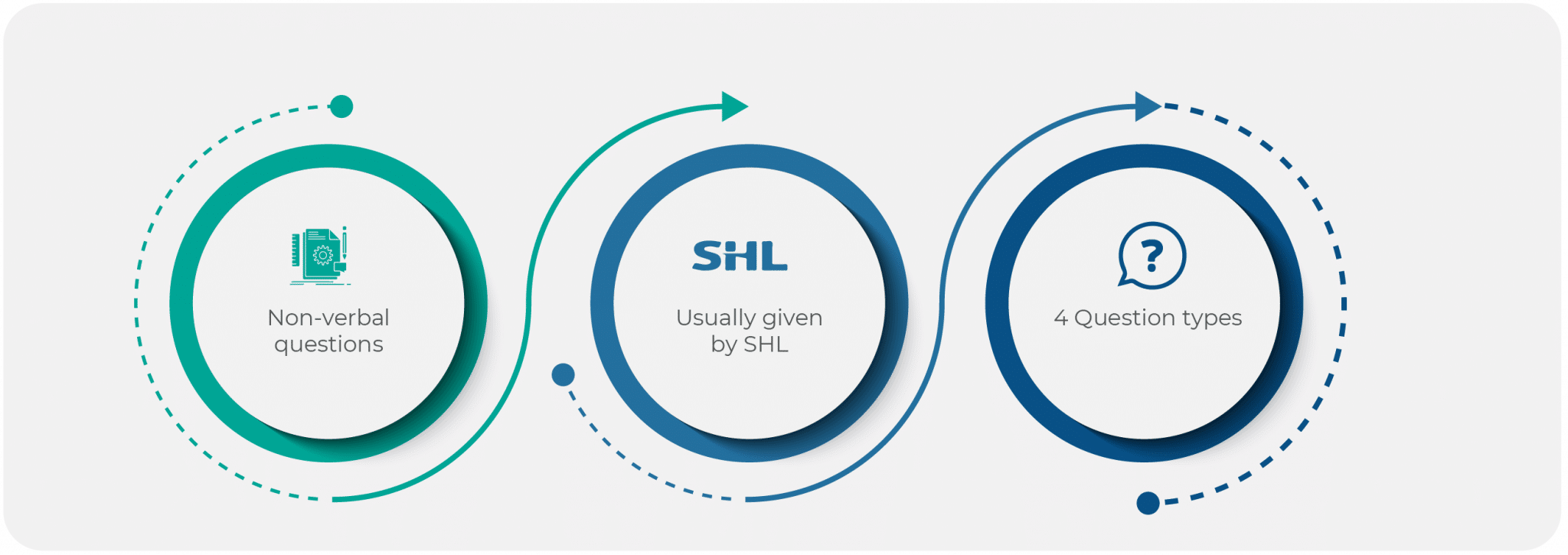
Inductive Reasoning Test Fast Facts. Source: iPREP
SHL Inductive Reasoning
SHL, probably the world’s largest provider of inductive Reasoning tests had this to say about it: “These tests measure the ability to work flexibly with unfamiliar information and find solutions. People who perform well on these tests tend to have a greater capacity to think conceptually as well as analytically.” (source: couriermail.com)
Common names of the test
- Inductive Reasoning
- Diagramatic Reasoning
- Abstract Reasoning
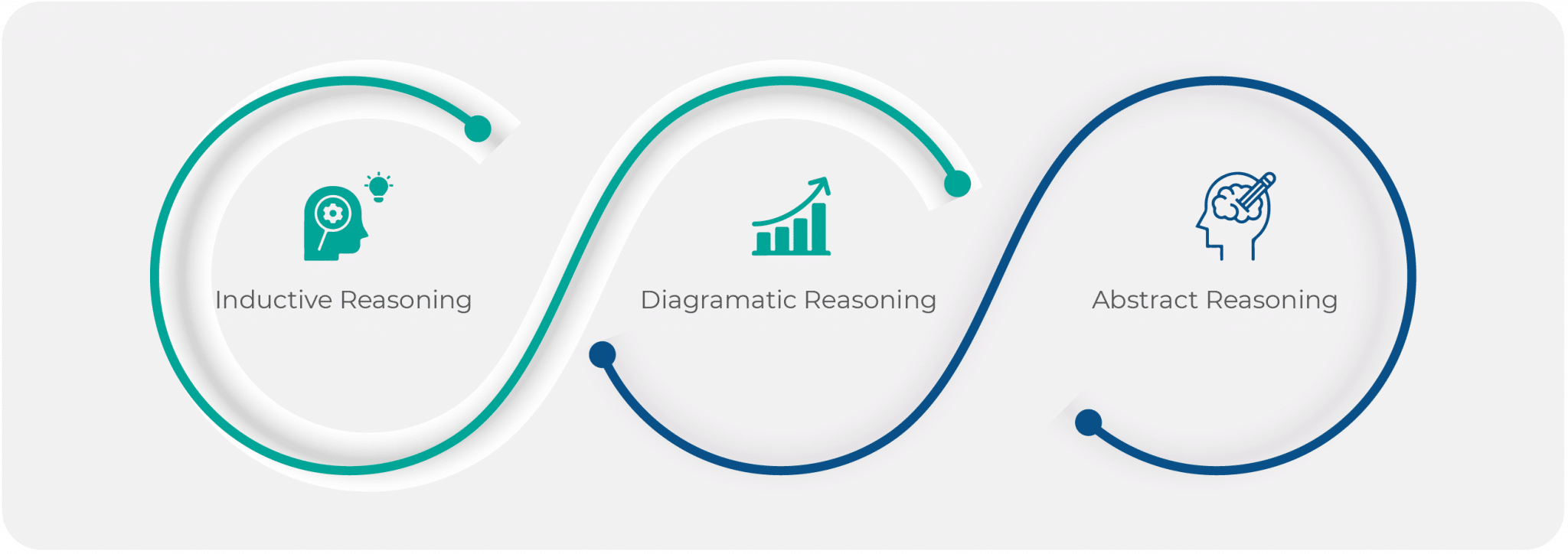
Inductive Reasoning Common Names of the Test. Source: iPREP
Inductive Reasoning FAQs
What is the Inductive Reasoning Test?
The Inductive Reasoning Test is a pre-employment assessment test that measures a candidate’s inductive reasoning skills. This test, usually by SHL, proves to HR and hiring managers that you have the ability to take information and draw a conclusion. If you take the time to study and practice, you will feel more confident during test-time and, consequently, score higher, proving to your future employers that you are a good enough candidate to move on to the next step in the recruitment process and, ultimately, join the team.
What to Expect on the Inductive Reasoning Test?
The Inductive Reasoning Test may be comprised of non-verbal questions in the following categories:
– Series completion
– Matrix completion
– Odd one out
– Shape analogies
Inductive Reasoning Test Tips
1. Read through the instructions
Review the question and possible answers quickly, yet thoroughly. Scan the information for relevant data and apply it to reach the right answer.
2. Manage your time:
Don’t spend too much time on any one particular question. Remember that you have limited time to complete the test. If you encounter a tough question that you can’t immediately answer, take your best guess and move on to the next one.

Source: iPREP
3. Know your strengths
Don’t worry about not getting all the answers right. However, you should at least get a score above the average or within the score range required for a particular job.
4. Try to correctly answer as many questions as you can:
If you don’t know the actual answer to a question, you can at least start the process of elimination by removing the answers that sound extremely far-fetched.
5. Plan your Inductive Reasoning Test strategy:
While you are preparing for the test, take the time to read the instructions carefully so you can plan your test strategy and get the highest score possible. Avoid reading the instructions during the real test—you should know them before you even walk into the testing center.
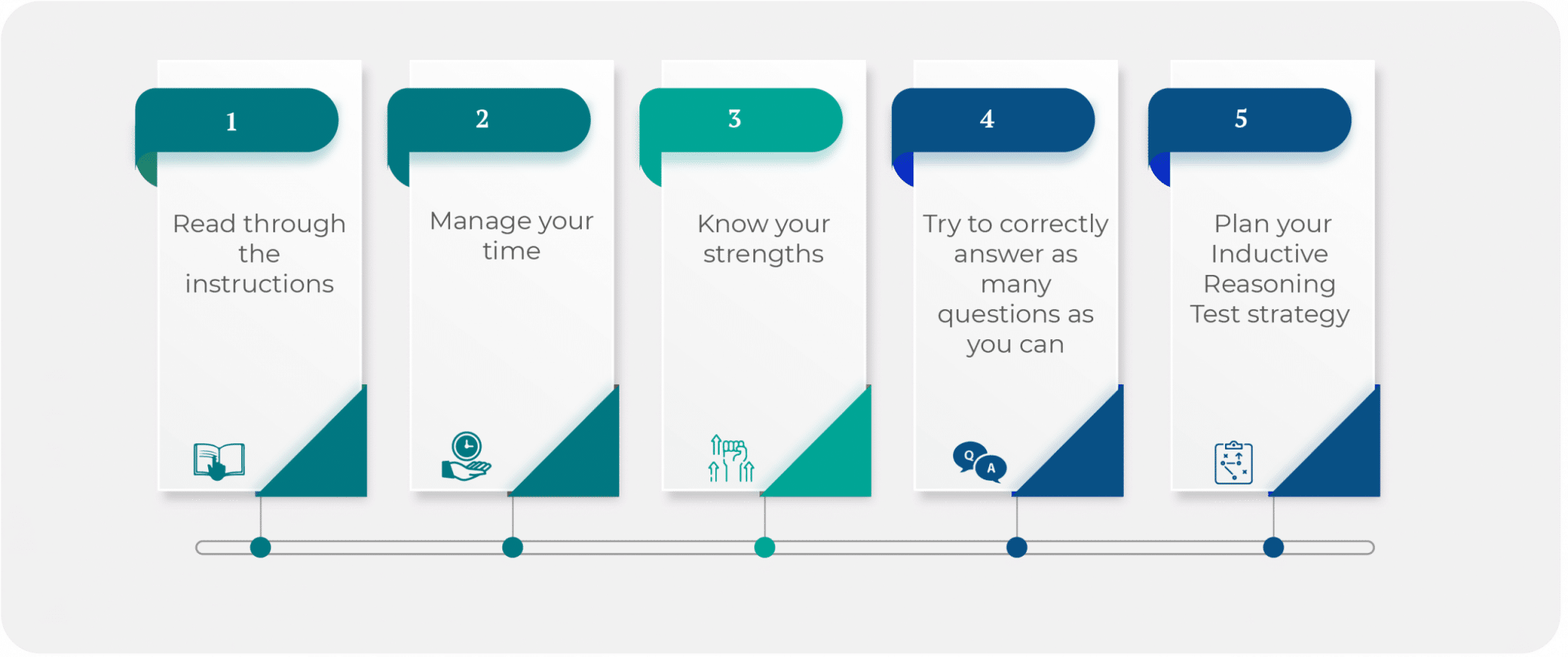
Inductive Reasoning Test Tips. Source: iPREP















![Toni Kroos là ai? [ sự thật về tiểu sử đầy đủ Toni Kroos ]](https://evbn.org/wp-content/uploads/New-Project-6635-1671934592.jpg)


